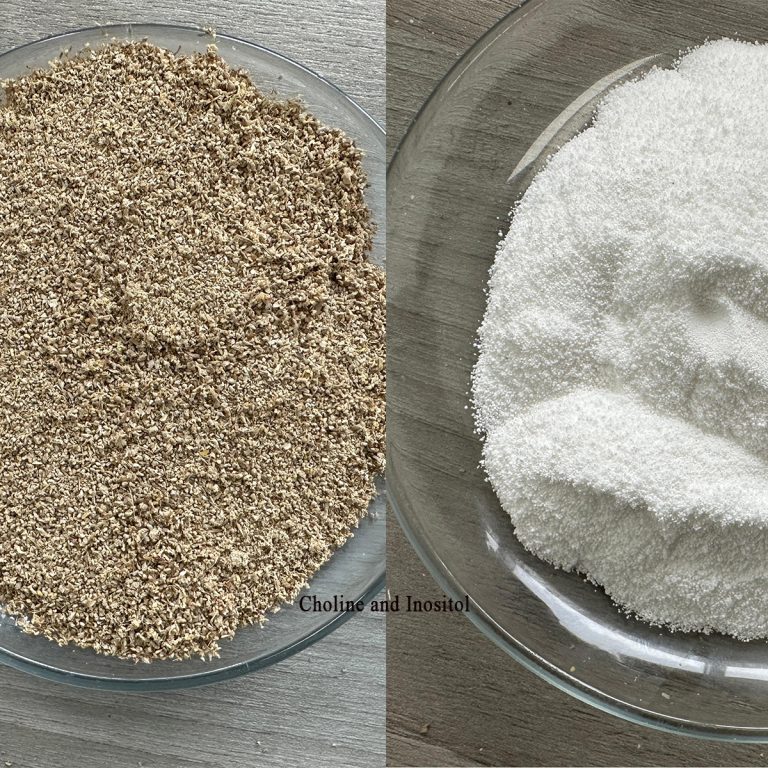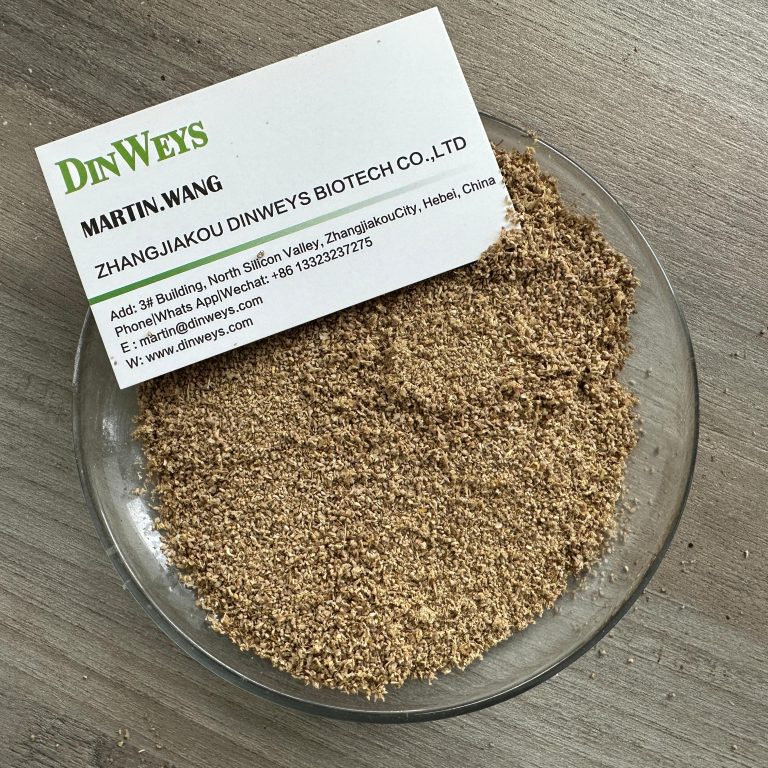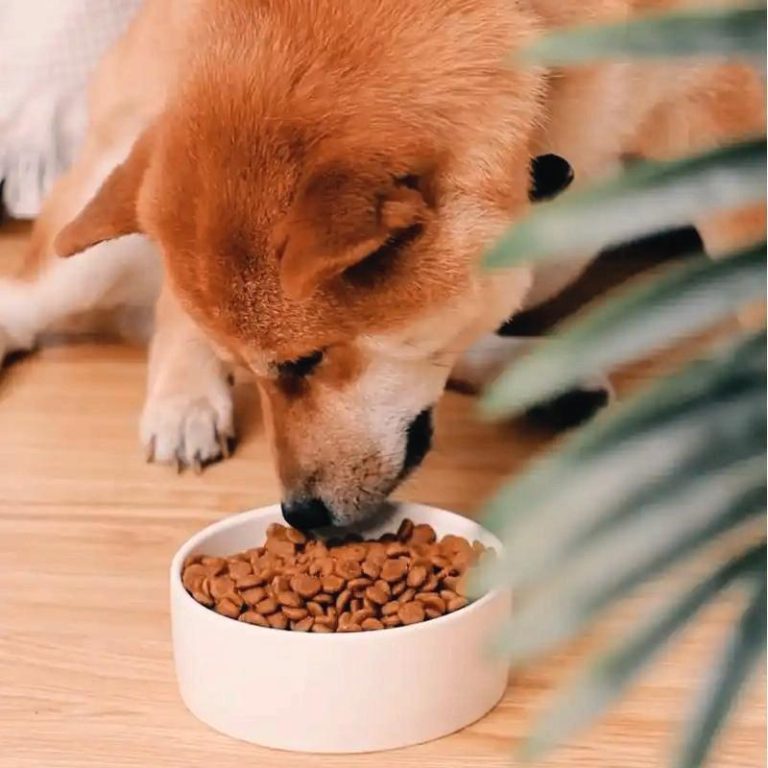Introduction
Choline chloride is a vital nutrient in both dog and cat food, serving as the primary supplemental source of choline. While dogs and cats share many metabolic needs, their nutritional requirements differ significantly because cats are obligate carnivores. Understanding the role of choline chloride in cat diets—and how it differs from canine nutrition—is crucial for feed formulators, veterinarians, and pet food manufacturers.
1. What Is Choline Chloride?
Choline chloride (C₅H₁₄ClNO) is the chloride salt of choline, a water-soluble B-complex nutrient essential for lipid metabolism, liver health, and nervous system function. It is commonly supplied as:
50% or 60% corn cob carrier powder
70% silica carrier powder
75% liquid solution
Other related choline products include lecithin (phosphatidylcholine), choline bitartrate, and choline citrate, though these are less common in animal feed.
2. Why Add Choline Chloride in Cat Food?
Cats cannot synthesize enough choline to meet their needs, making dietary supplementation critical.
Functions in cats:
Liver protection: Prevents hepatic lipidosis, a common risk in overweight or fasting cats.
Cellular structure: Maintains phospholipid balance in cell membranes.
Neurotransmission: Acts as a precursor of acetylcholine for nerve and muscle function.
Methyl group metabolism: Supports methionine and homocysteine pathways, crucial since cats rely heavily on protein metabolism.
Unlike dogs, cats have higher baseline requirements due to their protein-rich diets and limited ability to synthesize phosphatidylcholine from methionine (National Research Council, 2006).
3. Choline Chloride in Dog vs. Cat Food – Key Differences
| Aspect | Dogs | Cats | Explanation |
|---|---|---|---|
| Diet type | Omnivorous, can use carbs/fats flexibly | Obligate carnivores, protein-dependent | Cats’ metabolism is adapted to high-protein diets, needing more methyl donors |
| Choline requirement | Lower minimum requirement (AAFCO 2024: 1,200 mg/kg DM) | Higher minimum requirement (AAFCO 2024: 2,400 mg/kg DM) | Cats require nearly double due to higher protein metabolism |
| Risk of deficiency | Fatty liver, poor growth, neurological issues | Hepatic lipidosis, impaired nerve function, muscle weakness | Deficiency symptoms are more severe in cats |
| Alternative sources | Egg yolk, liver, lecithin | Animal-origin lecithin, fish, organ meats | Cats utilize animal-sourced choline more efficiently |
| Formulation sensitivity | More tolerant of plant-based choline | Less tolerant; plant lecithin less effective | Reflects species-specific digestion and absorption |
4. Alternatives to Choline Chloride in Cat Food
Although choline chloride is the standard additive, alternatives include:
Phosphatidylcholine (lecithin): Higher bioavailability in cats, especially from egg yolk or animal sources.
Choline bitartrate: Stable form, more common in supplements than feed.
Betaine & methionine: Indirect methyl donors, but cannot fully replace structural choline needs.
5. Applications in Other Animal Feeds
Choline chloride is not limited to pet food—it is also used in:
Poultry feed for growth and liver health
Swine feed for reproductive performance
Aquaculture diets for osmoregulation and growth
Dairy cow nutrition (rumen-protected forms)
This versatility makes it one of the most important additives across animal husbandry (Sharma et al., 2018).
6. Benefits and Drawbacks of Choline Chloride
Benefits:
Highly concentrated and cost-effective choline source
Supports liver health and prevents fatty liver in cats and dogs
Essential for neurological and metabolic function
Compatible with most feed processing technologies
Drawbacks:
Hygroscopic, prone to caking without proper carrier
Sensitive to heat during extrusion, may degrade
Excess supplementation may cause fishy odor in urine/breath
7. Can Cat Owners Add Choline Chloride to Homemade Diets?
Adding choline chloride directly to homemade cat food is not recommended without veterinary guidance:
Overdose risks: Excess can cause gastrointestinal upset or trimethylaminuria.
Precision issues: Cats have higher but narrow safe margins; accurate dosing is critical.
Safer alternatives: Food sources like egg yolk, liver, fish, or animal lecithin are more appropriate for homemade diets.
Veterinary nutritionists can prescribe specialized supplements if homemade or therapeutic diets are used.
Conclusion
Choline chloride is indispensable in cat food, serving as a safeguard against fatty liver disease and supporting nervous system and metabolic functions. Compared to dogs, cats require nearly double the dietary choline, reflecting their obligate carnivore metabolism. While alternatives like lecithin and choline bitartrate exist, choline chloride remains the most economical and widely applied choice.
For both dog and cat nutrition, commercial complete diets with AAFCO compliance are the safest way to ensure optimal choline levels, rather than owner-added supplementation.
References
National Research Council (NRC). (2006). Nutrient Requirements of Dogs and Cats. Washington, DC: National Academies Press.
Sharma, R., Kumar, V., & Kumar, A. (2018). Importance of choline in animal nutrition: A review. International Journal of Livestock Research, 8(9), 1-14.
Zeisel, S. H., & da Costa, K. A. (2009). Choline: An essential nutrient for public health. Nutrition Reviews, 67(11), 615–623.
Association of American Feed Control Officials (AAFCO). (2024). Official Publication. Champaign, IL.









